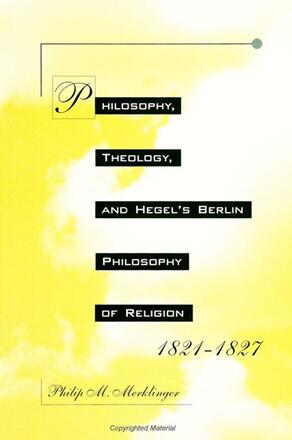
Philosophy, Theology, and Hegel's Berlin Philosophy of Religion, 1821-1827
Alternative formats available from:
Description
This book examines Hegel's contribution to the debate about the relationship between philosophy and theology, reason and faith. The author locates the debate within the philosophy of religion, displaying that there is a need for philosophy to enter into dialogue with, and to reflect upon, the contents of theology. Utilizing the recently published critical editions of Hegel's Berlin Lectures on the Philosophy of Religion, the author substantiates this insight by tracing dialectically the development of Hegel's notion of the philosophy of religion through the 1821, 1824, and 1827 lecture-series on religion. Not only does the author demonstrate that philosophy needs to incorporate theology in its thinking, but he also establishes that such incorporation means that the philosophy of religion will be a continuously developing mode of reflection. Indeed, the author notes this developing philosophy of religion can, for Hegel, only take place through dialectical interaction with the leading theologies and theologians of one's time. The book shows that this inner development of the philosophy of religion is also the inner development of the Spirit itself.
Philip M. Merklinger is Associate Professor of Philosophy at Augustana University College.
Reviews
"The great merit of this book is that it sets the evolution of Hegel's thought about religion in the context of the controversies of the time. This can be done effectively now that we have a critical edition of Hegel's Lectures in which the best available text of what Hegel said in different years has been separated. This work is particularly timely because of the prompt appearance of this text in an excellent English translation. " — H. S. Harris, Glendon College of York University